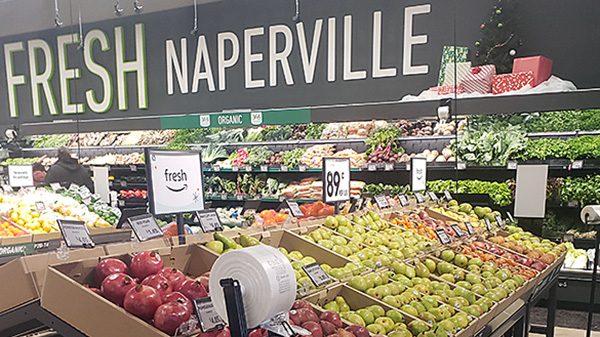When it comes to Amazon BB #:283186 and its segue into the grocery industry, there’s plenty of good, a few instances of bad, and an occasional bit of ugly.
Overall, though, the ecommerce giant is trying to innovate and succeed at the same time.
“Amazon’s biggest challenge is convincing a larger base of customers that it’s a good place to do most of their grocery shopping,” says Bill Bishop, chief architect at Brick Meets Click, a retail consultancy based in Barrington, IL, northwest of Chicago.
“The company is addressing this challenge with the growth of Amazon Fresh, where the stores serve as a constant reminder that Amazon is in the retail grocery business and provides a place where customers can visit and see the products before they buy, which is a source of reassurance for many shoppers.”
Bishop has visited a number Amazon Fresh stores. “It’s clear Amazon is still working to learn the grocery business and is not afraid to make mistakes,” he says.
The next step in Amazon’s evolution and the assimilation of Whole Foods is a bit opaque.
“At this point,” Bishop continues, “Amazon is adopting some of Whole Foods’ practices into the Amazon Fresh stores, but we don’t think that they’re doing much to further integrate the Whole Foods operation into the grocery business—that will probably become clearer over the next two to three years as Amazon Fresh stores mature.”
Scaling upward
“Amazon has a relatively small footprint of brick-and-mortar locations from which it can pick and deliver large, stock-up online grocery orders,” says Jon Hauptman, senior director of analytics at Inmar Intelligence in Winston-Salem, NC.
“However, I imagine it’s looking at available locations for new Amazon Fresh stores across the country that can offer about 15,000 products.”
Recent moves on the part of Amazon suggest this is already occurring. “Amazon has quickly graduated from a test-and-learn phase and is set to rapidly scale its smaller Amazon Fresh stores,” says Carol Spieckerman, president of Spieckerman Retail in Bentonville, AR.
“Amazon Fresh could be seen as Whole Foods 2.0 as the stores are cheaper to build and offer a clean brand impression by not being associated with Whole Foods. True scale is no longer achieved in a single channel, and Amazon is in the throes of correcting its brick-and-mortar deficiencies,” she says.
Several experts agree there will likely be more focus on Amazon Fresh stores rather than Whole Foods, as well as more synergies between the two.
“Amazon’s brick-and-mortar strategy is evolving away from relying on Whole Foods stores toward efficiently opening new Amazon Fresh stores in former retail storefronts, in major markets across the country,” says Jon Hauptman, senior director of analytics at Inmar Intelligence in Winston-Salem, NC.
“I expect that future growth of Amazon’s brick-and-mortar portfolio will be focused on Amazon-branded stores versus growing the Whole Foods footprint.”
Bruce Peterson, CEO of Peterson Insights, Inc. in Bentonville, AR, says that food retailers are investing millions of dollars into their private labels, and Amazon is no exception.
“There’s not the attachment to Amazon that there is to Whole Foods, so I wouldn’t be surprised if Whole Foods and Amazon labels appear together more often,” Peterson predicts, “or if they create a whole new brand that’s available at both Whole Foods and Amazon.”
This is an excerpt from cover story of the November/December 2021 issue of Produce Blueprints Magazine. Click here to read the whole issue.



